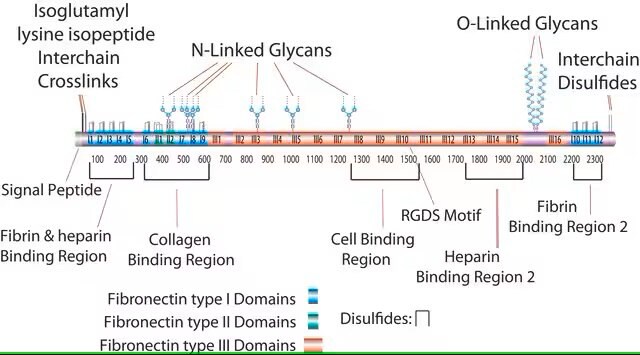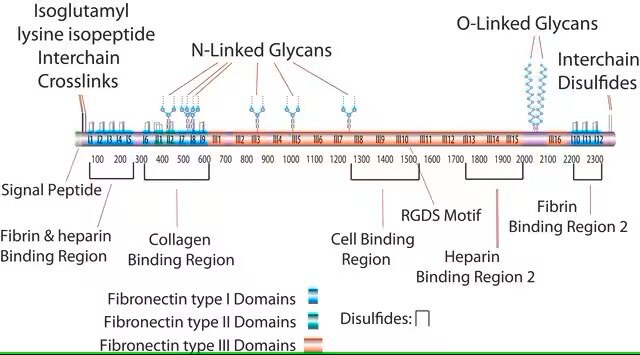10838039001
Roche
Fibronectine
from human plasma
Synonyme(s) :
Fibronectin
About This Item
Produits recommandés
Source biologique
human plasma
Niveau de qualité
Stérilité
non-sterile; 0.2 μm filtered
Essai
95% (SDS-PAGE)
Forme
lyophilized (clear, colorless solution after reconstitution)
Poids mol.
440 kDa
Conditionnement
pkg of 5 mg
Fabricant/nom de marque
Roche
Conditions de stockage
avoid repeated freeze/thaw cycles
Technique(s)
cell culture | mammalian: suitable
Numéro d'accès UniProt
Température de stockage
2-8°C
Informations sur le gène
human ... FN1(2335)
Vous recherchez des produits similaires ? Visite Guide de comparaison des produits
Description générale
Spécificité
Application
Méthode d'analyse
Forme physique
Notes préparatoires
5 μg/cm2 for the coating of cell culture vessels
Storage conditions (working solution): -15 to -25 °C
The reconstituted solution is stable at -15 to -25 °C.
Note: Store the reconstituted solution in aliquots at -15 to -25 °C.
Avoid repeated freezing and thawing.
Reconstitution
Upon reconstitution, the solution may contain a small amount of insoluble aggregated material. These aggregates are a phenomenon inherent to fibronectin and do not influence product performance.
Autres remarques
Clause de non-responsabilité
Code de la classe de stockage
11 - Combustible Solids
Classe de danger pour l'eau (WGK)
WGK 1
Point d'éclair (°F)
does not flash
Point d'éclair (°C)
does not flash
Faites votre choix parmi les versions les plus récentes :
Déjà en possession de ce produit ?
Retrouvez la documentation relative aux produits que vous avez récemment achetés dans la Bibliothèque de documents.
Les clients ont également consulté
Articles
The extracellular matrix (ECM) is secreted by cells and surrounds them in tissues.
3D cell culture overview. Learn about 2D vs 3D cell culture, advantages of 3D cell culture, and techniques available to develop 3D cell models
Extracellular matrix proteins such as laminin, collagen, and fibronectin can be used as cell attachment substrates in cell culture.
Protocoles
Dilute fibronectin to the desired concentration. Optimum conditions for attachment are dependent on cell type and application. The typical coating concentration is 1 – 5 ug/cm2.Fibronectin coating protocol, products, and FAQs.
Notre équipe de scientifiques dispose d'une expérience dans tous les secteurs de la recherche, notamment en sciences de la vie, science des matériaux, synthèse chimique, chromatographie, analyse et dans de nombreux autres domaines..
Contacter notre Service technique







